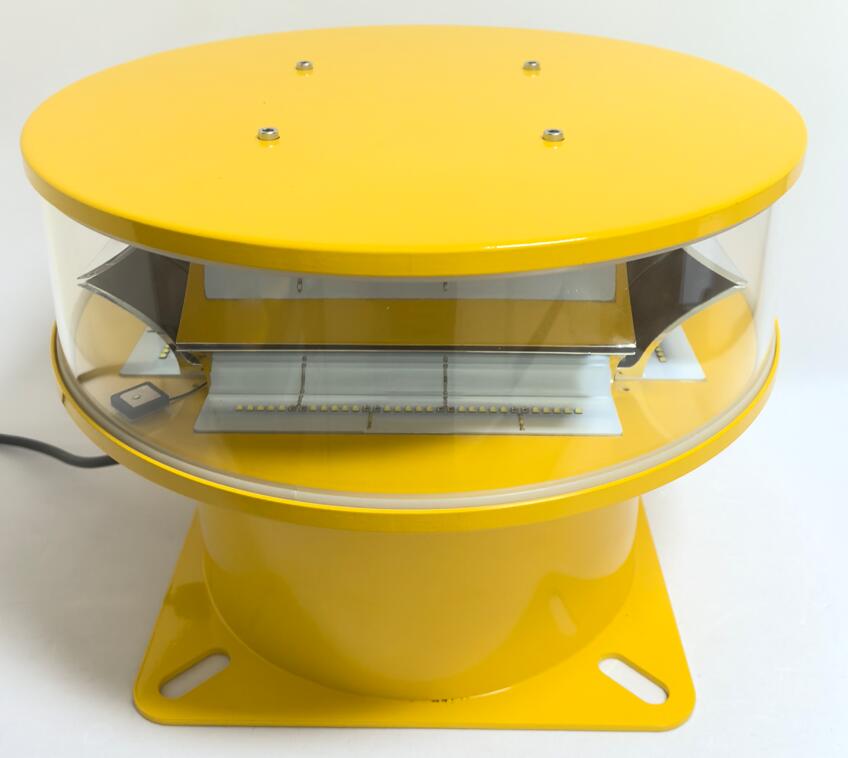In the vast expanse of the sky, where aircraft navigate through complex airspace, safety is paramount. One of the most critical tools ensuring this safety is the use of aircraft warning lights. These lights, often seen blinking on tall structures, are not just for show—they serve a crucial purpose in preventing accidents and safeguarding both airborne and ground-based assets. This article delves into the importance, applications, and advancements in the use of aircraft warning lights, highlighting their indispensable role in modern aviation.
What Are Aircraft Warning Lights?
Aircraft warning lights are specialized lighting systems installed on tall structures such as communication towers, wind turbines, skyscrapers, and bridges. Their primary function is to make these structures visible to pilots, especially during nighttime or adverse weather conditions. By providing a clear visual reference, these lights help prevent collisions and ensure safe navigation.

The Importance of the Use of Aircraft Warning Lights
The use of aircraft warning lights is essential for several reasons:
Collision Prevention: Tall structures can pose significant hazards to low-flying aircraft. Warning lights alert pilots to the presence of these obstacles, allowing them to adjust their flight paths accordingly.
Regulatory Compliance: Aviation authorities worldwide mandate the installation of warning lights on structures exceeding certain heights. Compliance with these regulations is not just a legal requirement but also a moral obligation to ensure public safety.
Enhanced Visibility: In conditions of reduced visibility—such as fog, rain, or darkness—aircraft warning lights provide a reliable visual cue, helping pilots navigate safely.
Protection of Infrastructure: By preventing collisions, these lights also protect the structures they are mounted on, avoiding potential damage and costly repairs.
Applications of Aircraft Warning Lights
The use of aircraft warning lights spans various industries and applications:
Urban Skyscrapers: In bustling cities, skyscrapers dominate the skyline. Warning lights on these buildings ensure they are visible to helicopters and low-flying aircraft, particularly in densely populated areas.
Communication Towers: These towers, often located in remote or elevated areas, rely on warning lights to alert pilots to their presence, especially during nighttime operations.
Wind Turbines: As wind farms expand, the use of aircraft warning lights on turbines becomes crucial to prevent collisions and ensure the safety of both aircraft and renewable energy infrastructure.
Bridges and Power Lines: Tall bridges and high-voltage power lines also utilize warning lights to mark their presence, particularly in areas with heavy air traffic.
Technological Advancements in Aircraft Warning Lights
The use of aircraft warning lights has evolved significantly over the years, thanks to technological advancements:
LED Technology: Modern warning lights often use LED technology, which offers brighter illumination, lower energy consumption, and longer lifespans compared to traditional incandescent bulbs.
Smart Lighting Systems: Some warning lights are equipped with sensors that adjust brightness based on ambient light conditions, enhancing their effectiveness while conserving energy.
Solar-Powered Lights: In remote or off-grid locations, solar-powered warning lights provide a sustainable and reliable solution, reducing the need for frequent maintenance.
The Global Impact of Aircraft Warning Lights
The use of aircraft warning lights has a profound impact on global aviation safety. As air traffic continues to grow and urban landscapes become more crowded, the need for effective warning systems becomes increasingly critical. From towering skyscrapers in metropolitan areas to wind farms in rural landscapes, these lights ensure that airspace remains safe and navigable for all.
The use of aircraft warning lights is a cornerstone of modern aviation safety. These lights, though often unnoticed by the general public, play a vital role in preventing collisions, protecting infrastructure, and ensuring compliance with aviation regulations. As technology continues to advance, the effectiveness and efficiency of these systems will only improve, further enhancing their contribution to safer skies.
Whether you’re a pilot, an engineer, or simply someone who values safety, it’s clear that the use of aircraft warning lights is more than just a technical requirement—it’s a commitment to preserving lives and property in an increasingly complex world.

